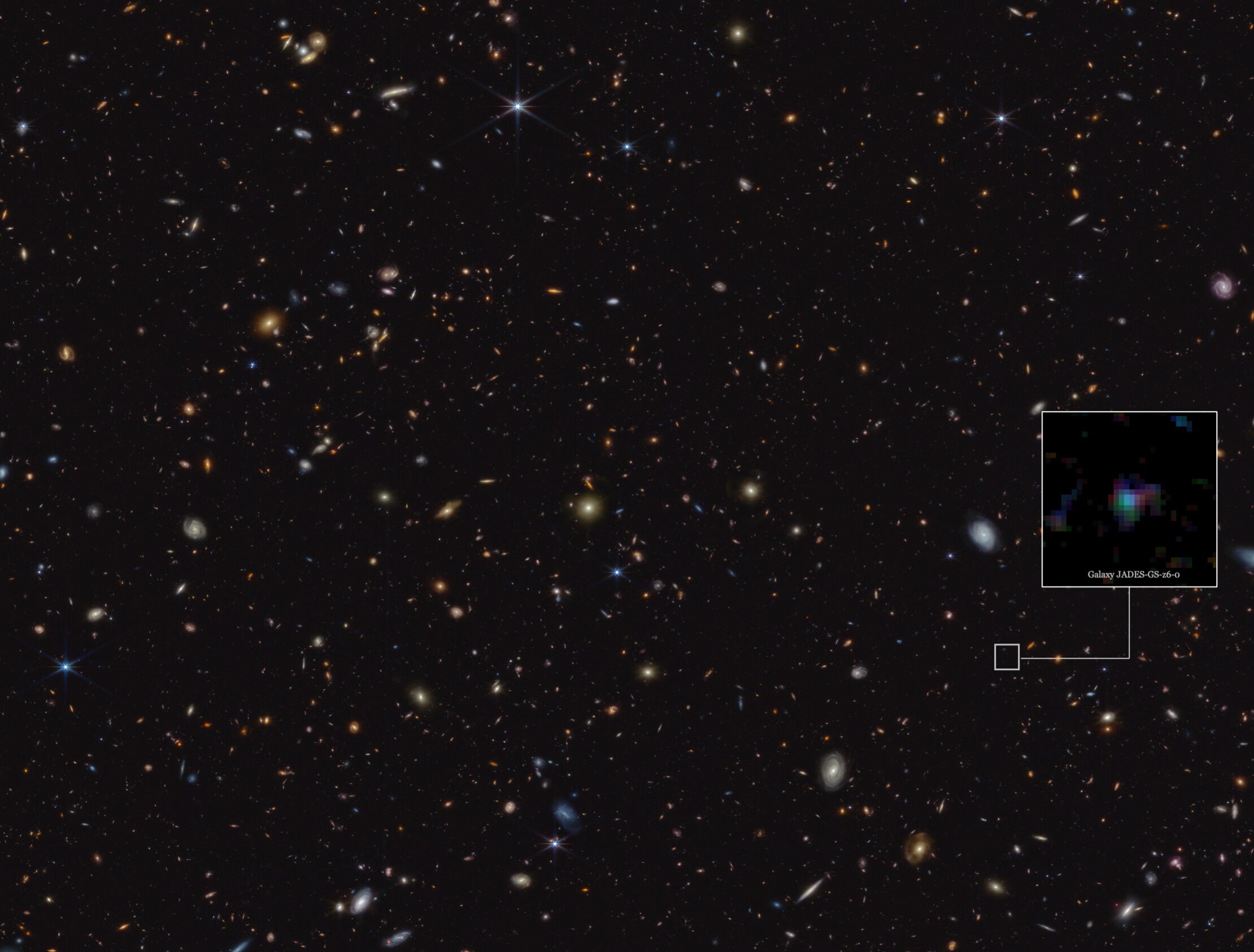
The James Webb Space Telescope (JWST) has detected the earliest and most direct signature for carbon-rich dust grains from the early universe. Experts had previously thought that elements heavier than hydrogen and helium were signatures of older galaxies. But the presence of carbon in young galaxies suggests otherwise, and challenges current theories about dust formation.
A study published in Nature this July offers vital clues about cosmic dust and its role in galaxy evolution in the first billion years of cosmic time. Cosmic dust grains can range in size from just a few molecules to 0.004 inch (0.1 mm) and can vary greatly in composition. After mostly forming in stars, dust is thrown into space by various events, like winds or supernovae.
Dusty space
Dust-filled areas can make observing a challenge because it absorbs light. Fortunately, depending on the chemical composition of the dust molecules, different elements absorb light at different, specific wavelengths. By noting the wavelengths of light that are blocked, astronomers can essentially reveal what the dust is made of.
Using this technique and data from JWST, researchers at the University of Cambridge were able to detect carbon-rich dust grains one billion years after the universe came to exist. Observations of the local, modern-day universe often find these two same carbon-based molecules: polycyclic aromatic hydrocarbons (PAHs) and microscopic graphites. However, astronomers have long thought that these molecules should not exist in the distant, early universe because they wouldn’t have had time to form. Models have suggested it would take hundreds of millions of years to form PAHs.
Making star stuff
Detecting this carbon-rich dust in the early universe is changing how experts understand the cosmos. Researchers are now hypothesizing about what could have created it so soon after the Big Bang.
Alternatively, perhaps the dust astronomers are seeing isn’t carbon-rich PAHs and graphites.
According to a press release, based on exactly which wavelengths the observed dust is absorbing, lead author Joris Witstok of Sidney Sussex College in Cambridge, England, suspects the dust might instead be a mix of diamond-like or graphite-like grains. These types of grains can be formed in short timeframes by material ejected from supernovae, including those of very massive and short-lived stars. If true, the discovery would fit much more neatly into our current picture of star and dust formation.
Improved models
Before JWST, multiple observations of galaxies had to be combined to observe how their light was affected by dust absorption. Experts were forced to study older galaxies that had had enough time to gather dust and form stars, limiting their ability to pinpoint the sources of cosmic dust. With JWST’s powerful capabilities, scientists can now see light from dwarf galaxies that have existed since the first billion years of cosmic time and observe the origin of their dust in detail.
“We are planning to work further with theorists who model dust production and growth in galaxies,” said study co-author Irene Shivaei of the University of Arizona/Centro de Astrobiología (CAB). “This will shed light on the origin of dust and heavy elements in the early universe.”









